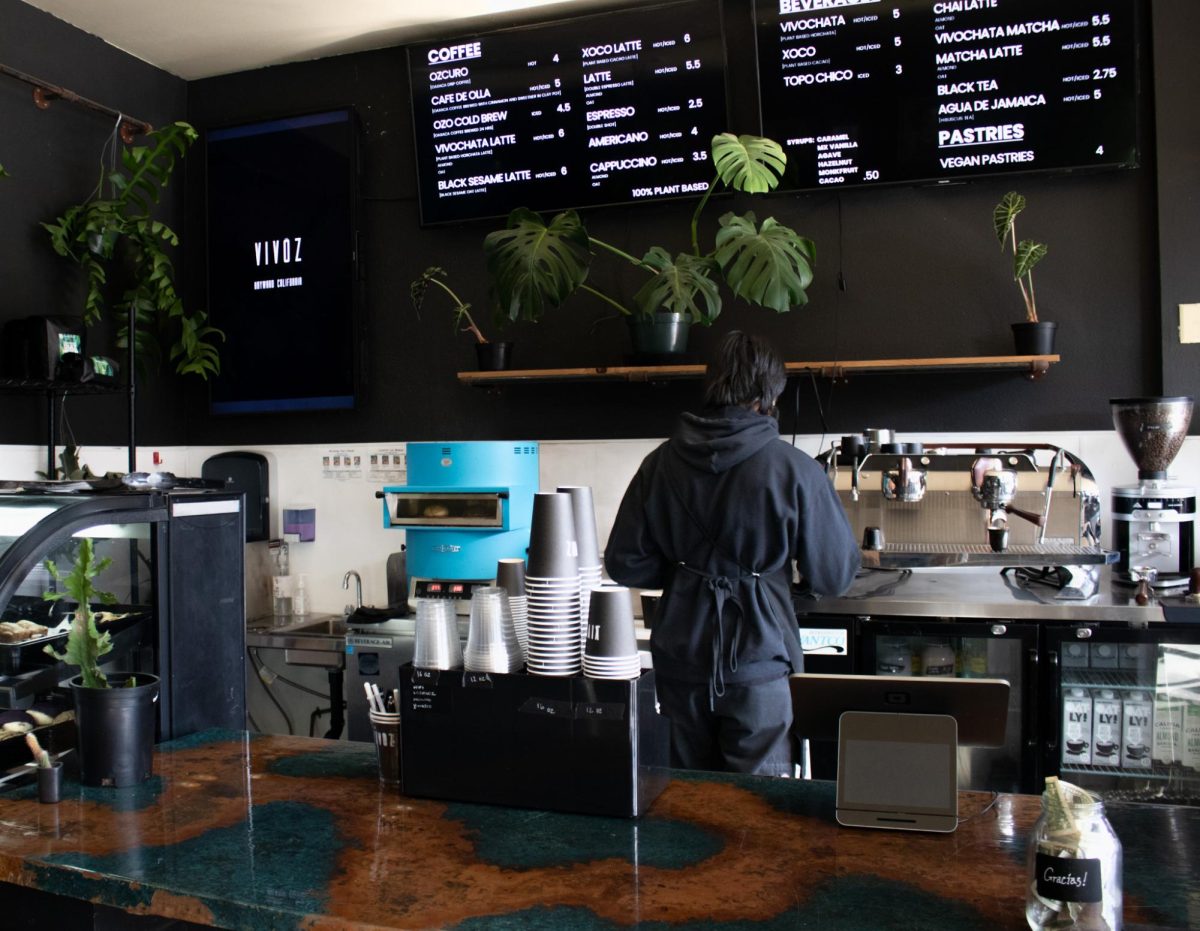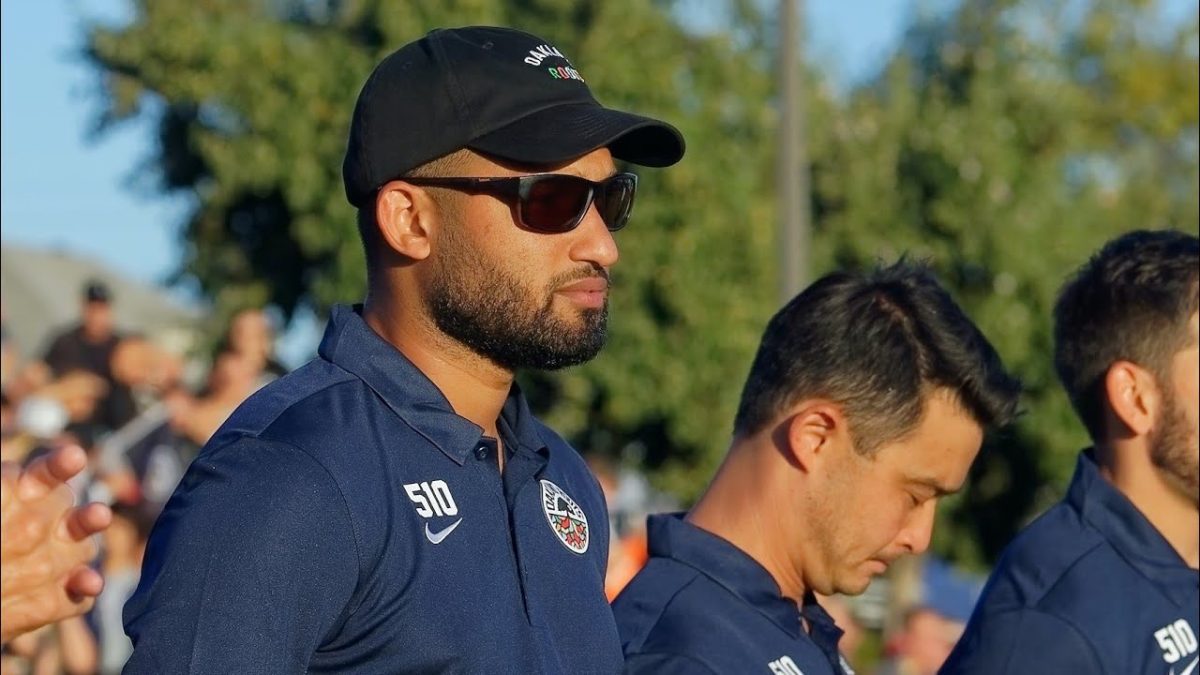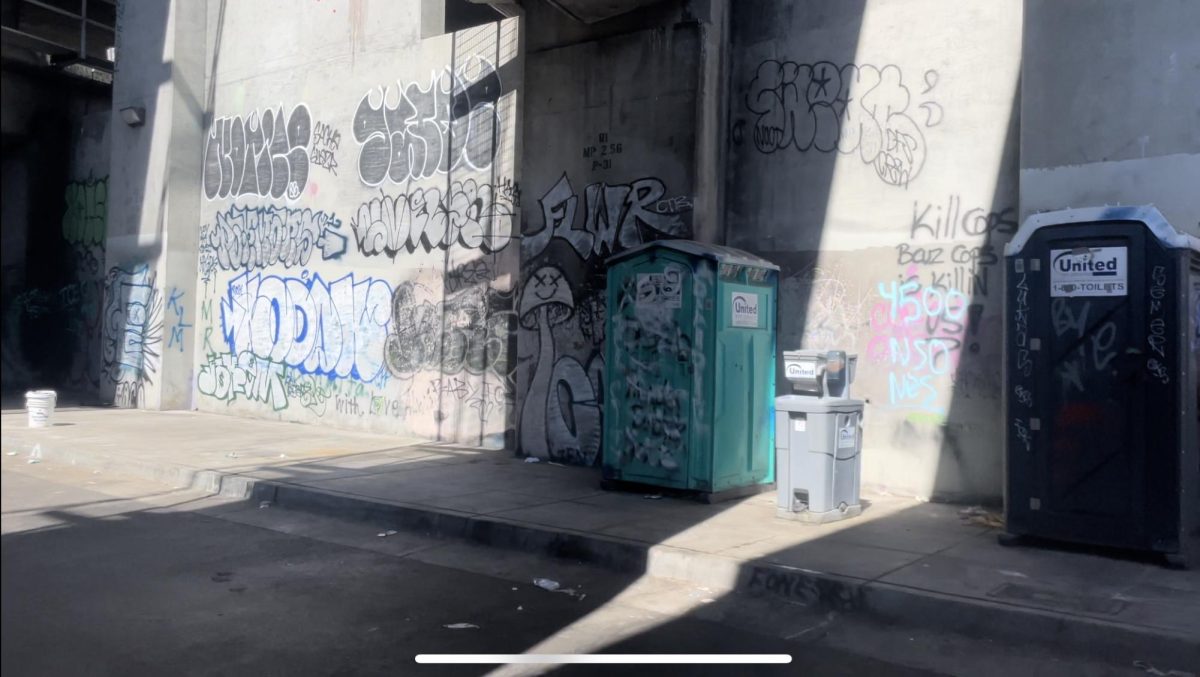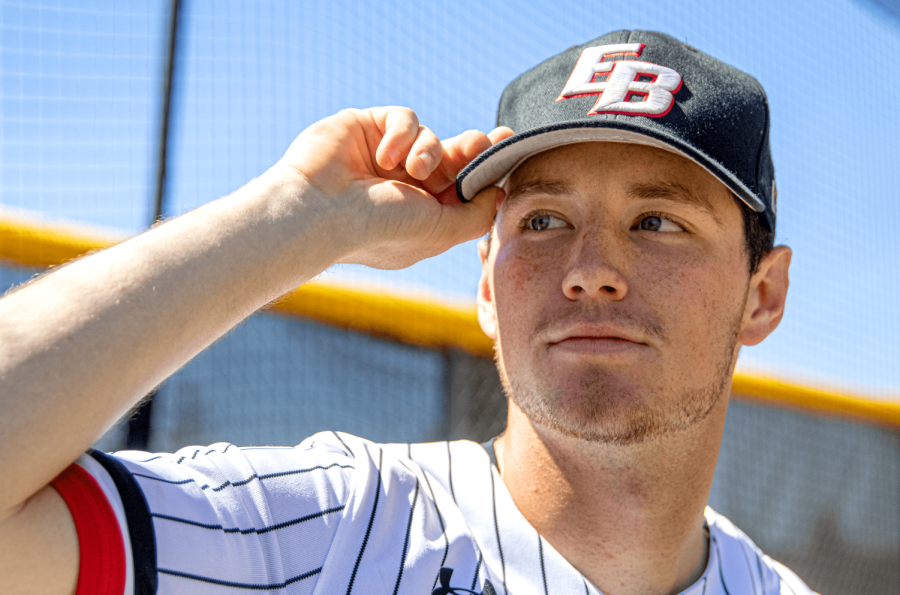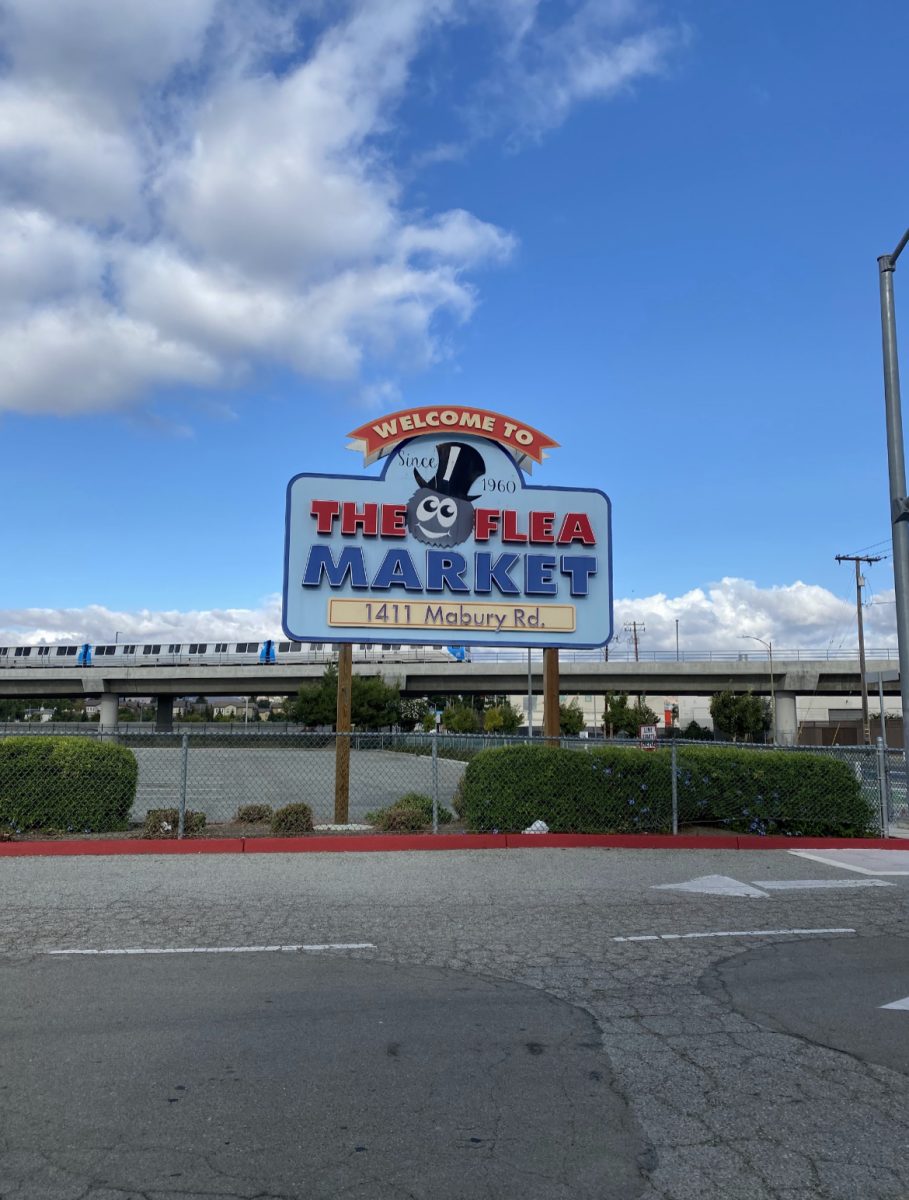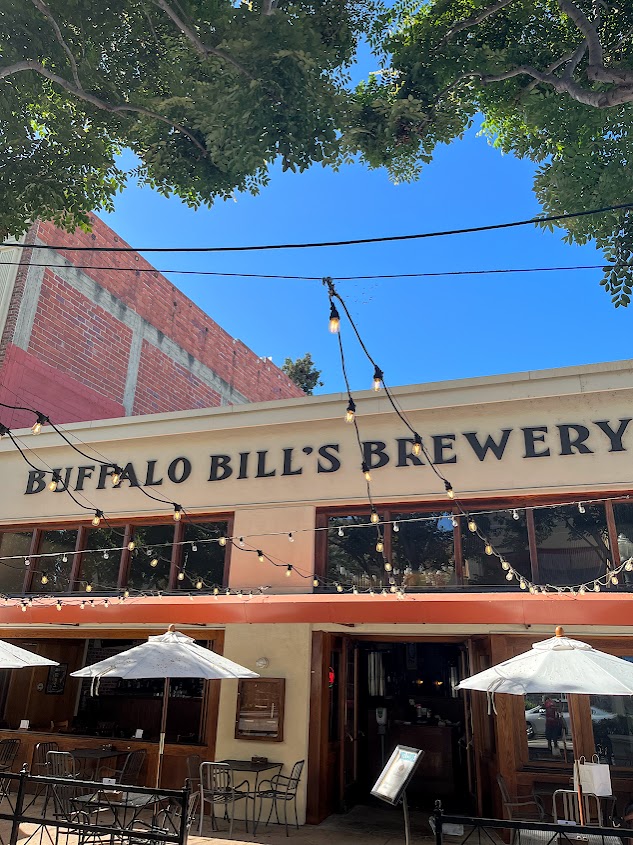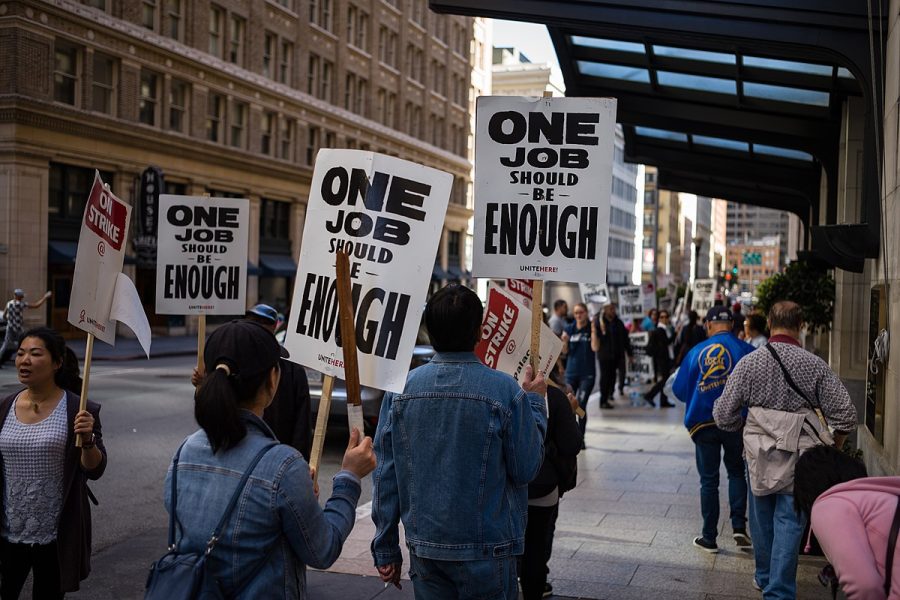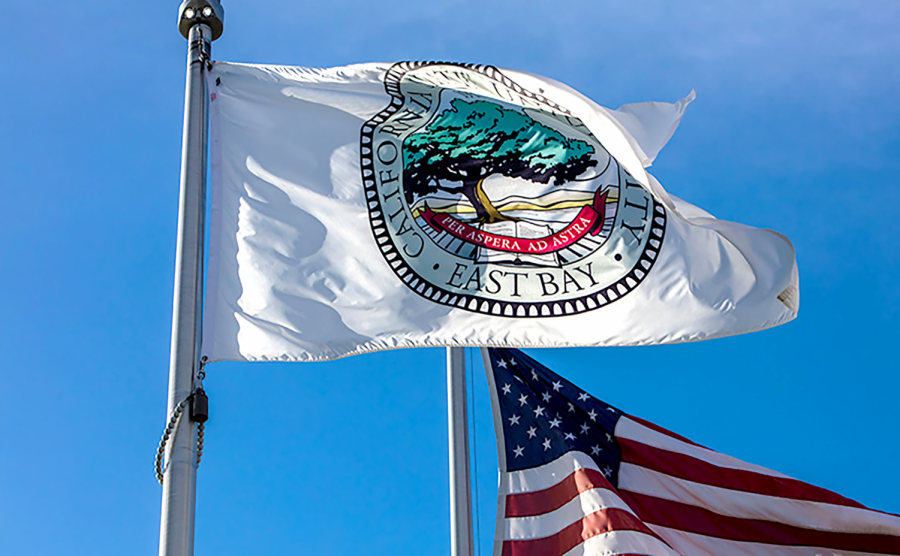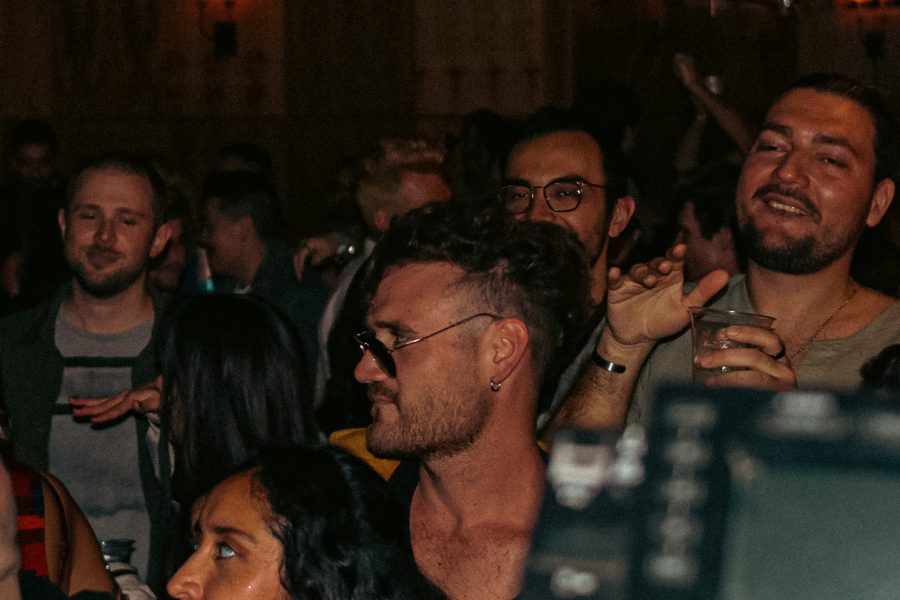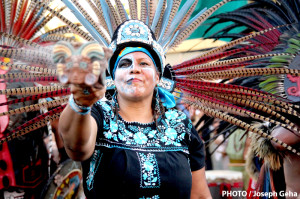
“ofrenda,” or offering during a cermonial dance.
The dead came to life Sunday in Fruitvale, as they wandered through the streets in their ornate and colorful attire, their deep-set lifeless eyes piercing at every gaze as they made their way to the altars to pay respects to those who came before them.
Ceremonial incense filled the air at every corner; its warm and spicy sandalwood aroma dressing each performer as they knelt down to begin their prayers and dedications.
The men and women with white faces, spine chilling black eyes and deep red cheeks soon began to dance around an altar dedicated to a young man from Oakland who was murdered in a drive by shooting this year, bringing him “pan de muerto,” marigold flowers and music to honor his memory.
“Death is not something to fear or hate; death is the best way to remind us that life is beautiful and the people we met are important, and they deserve to be celebrated for their joy and mark in our world,” said Celia Villa, one of Sunday’s walking dead.
“Death is beautiful because life is beautiful.”
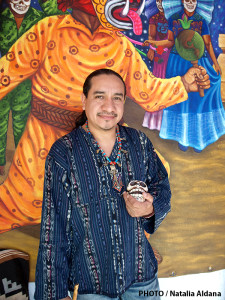
display at the festival, Ernesto Ismauel
Olmos.
Hundreds of thousands of people joined the dead this weekend to celebrate Día de Los Muertos, or Day of the Dead, a traditional Latino holiday where families celebrate the lives of the deceased through artwork, music, dance and food.
The intent behind Día de Los Muertos is to encourage visits by the souls of the deceased so they will hear the prayers and the comments of the living directed to them. Celebrations can take a humorous and entertaining tone, evident through Sunday’s bright decorations and intoxicating energy.
The seven-hour celebration consumed the streets between 33rd, 37th Avenue and International Boulevard in Oakland brought people from all over the Bay Area to explore the history of the holiday, as well as enjoy traditional Latino and American cuisine, listen to salsa and ranchero music and shop from local vendors.
One of the most distinctive features about Día de Los Muertos is the color. Not a single hue was missing from Sunday’s event, as skull candies, paintings, candles, and costumes exemplified how Latin America sees life, and how they express their culture through beautifully crafted and unique art.
Día de los Muertos combines elements of traditional funeral celebrations with those of pagan harvest festivals. Dating more than 500 years, the holiday is marked by altars, or “ofrendas,” that are uniquely designed to be personal and distinctive to each person. The altars are adorned with fresh marigolds, fruit and bread, elaborate sugar skulls, Religious icons and figurines, candles and of course, photographs of the dead.
On Sunday, over 20 altars lined the street ways, some by professional local artists like Ernesto Ismael Hernandez Olmos. His altar, “La Comparsa de Muertos,” or “The Procession of the Dead,” signifies the blur between the dead and the alive on the holiday, the significance of living in the moment and honoring tradition.
“That’s what we want to tell the community today, that death is not something bad, it’s something you accept and celebrate,” said Olmos, who has been exhibiting his art at the Fruitvale festival for 13 years.
“The most important thing is honoring the ancestors, honoring your mom, father, be aware that the spirit world is with you all the time. We just give them one day, or two days a year, when they gave us everyday when they were alive,” he said.
“Death is the celebration of life, and that’s very different in American culture, so today is a good way for people in the community to learn about Latino tradition.”
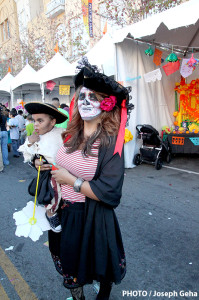
festival with the traditional holiday
makeup.
After visiting altars like Olmos’, festivalgoers had the opportunity to enjoy live music at three different stages, ranging from Mariachi, salsa, folkloric and Banda, and then to satisfy their hunger with either pupusas, tacos, hot dogs, teriyaki chicken, fresh fruit and much more. Shopping ranged from the traditional Latin craft and art, to clothing, jewelry and even CD’s for a Peruvian flute Beatles cover band.
For Michael Dunham, a native of Ohio, Día de Los Muertos was a relative mystery before Sunday, as he had never attended nor heard of the festival. His fiancé Elise Tioni on the other hand, has attended the festival in Fruitvale for about five years, and after growing up in Oakland, she felt it was important to expose Dunham to the festival.
“In America death is black and somber, but for Latinos, although the mourning is just as deep, the colors of life don’t fade away,” said Tioni. “You still see yellows and reds, bright greens and every other color. I love the energy of today and of the Latino people who have such a positive and healthy look on life, so I wanted Michael to see this.”
Dunham said the culture shock was “ super welcoming.”
“The people here, even though they’re probably strangers, act as a community and a family. One of the artists was telling me that Día de Los Muertos is more than just the dancing and art, it’s about family,” said Dunham. “That’s such a fantastic way to view life.”






